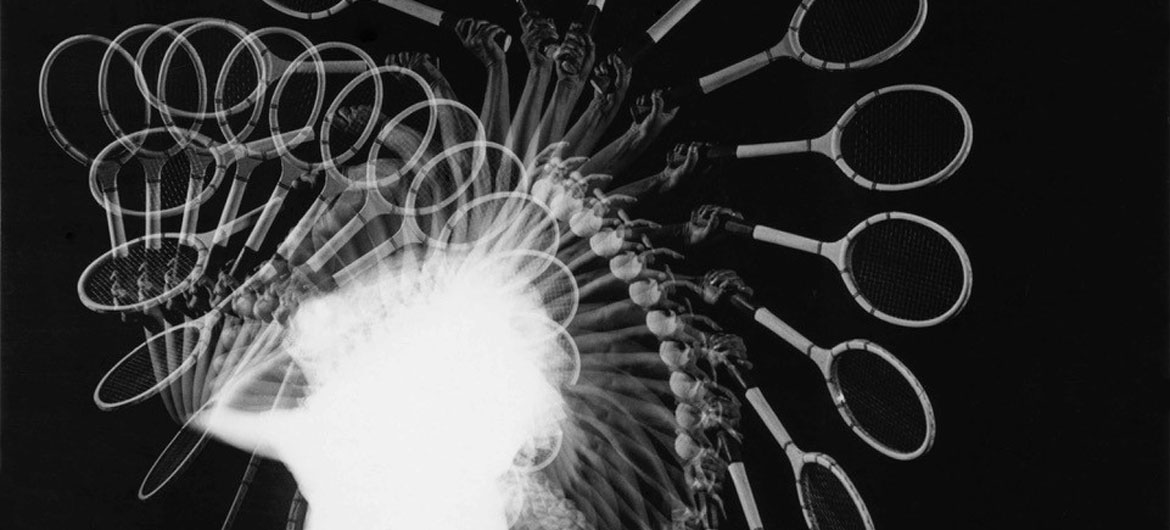Beginning in the early 1930s, Harold “Doc” Edgerton’s (1903-1990) invention of the strobe light allowed him to freeze time, offering new insights into motion and how the world works. His first book, “Flash! Seeing the Unseen by Ultra High-Speed Photography,” was published in 1939. “This whole book,” The New York Times wrote, “covering the fields of nature, sport and industry, is a compilation of magic and things undreamed.”
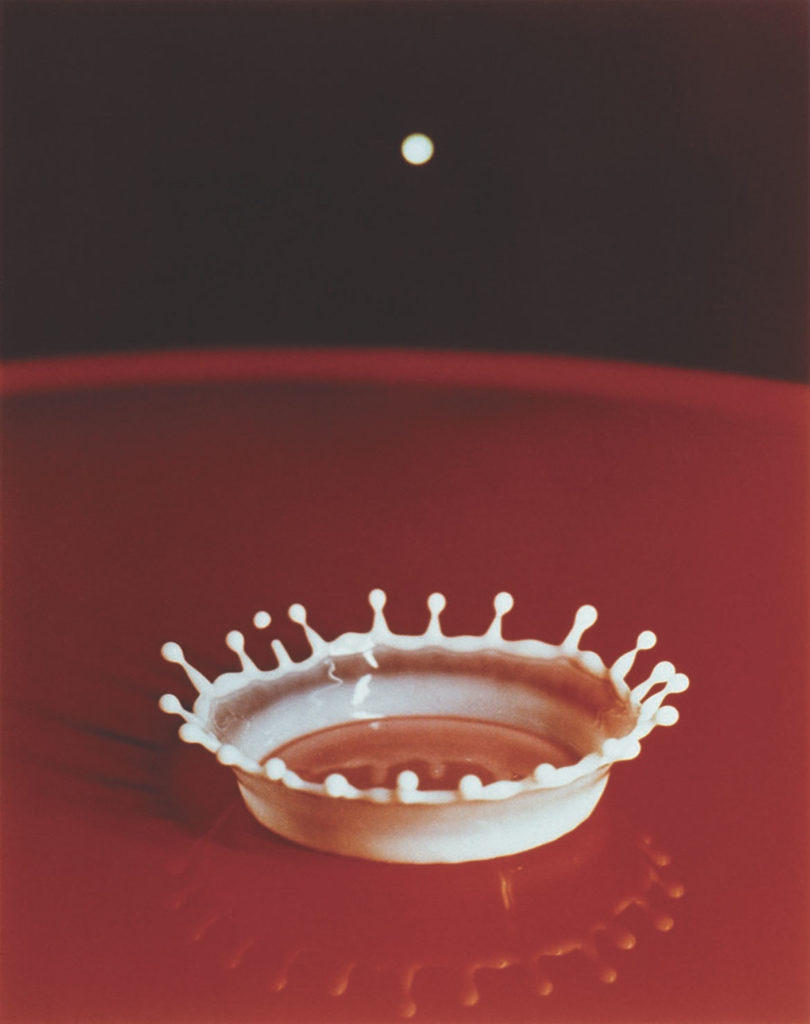
“Harold E. Edgerton – Rarities,” at Gallery Kayafas in Boston from Dec. 7, 2018, to Jan. 26, 2019, is a small exhibition spanning Edgerton’s career. Arlette Kayafas writes that her husband “Gus Kayafas, former student and Edgerton’s printer and photographic editor has selected these images from the archive. Kayafas was recently in ‘Steidlville’ where he oversaw the production of a new Steidl volume, ‘Harold Edgerton: Seeing the Unseen,’ published in cooperation with the MIT Museum. Many of the prints in this exhibit are unique, all are quite rare, and a few are the actual prints used for the book reproductions.”
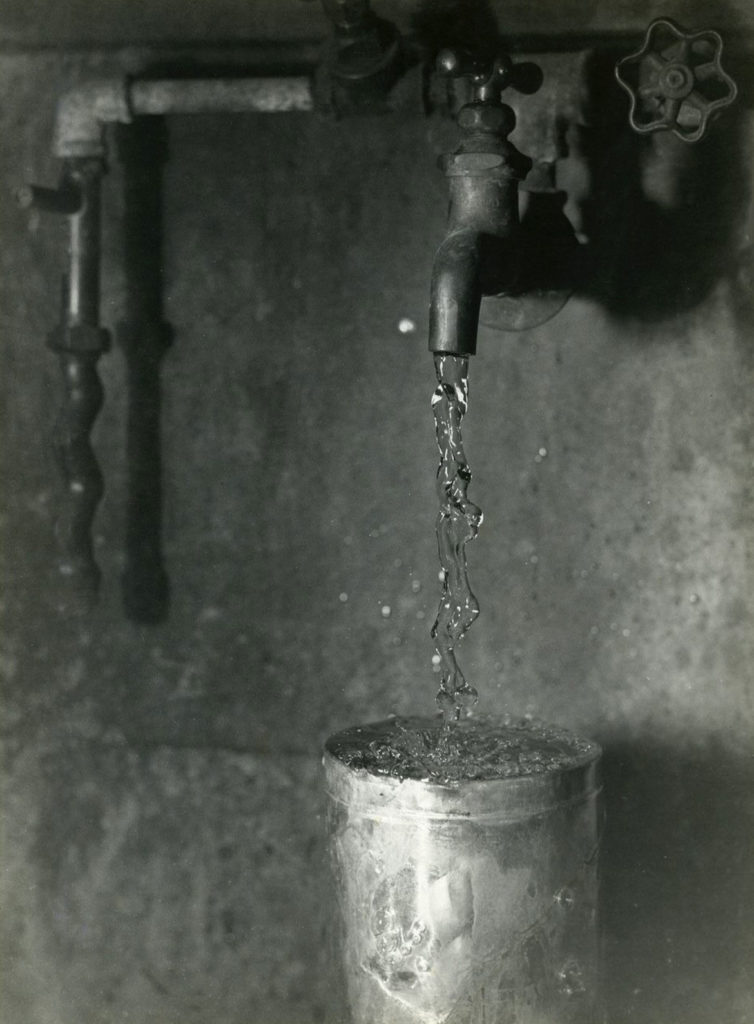
Edgerton grew up in Nebraska, where he began experimenting with cameras and lighting. He earned a master’s degree in electrical engineering from Massachusetts Institute of Technology in Cambridge in 1927, joined the faculty, and earned a doctorate degree in 1931. He taught and researched at the school until his retirement in 1968, but continued work at the school laboratories for much of the rest of his life.
“An inveterate problem-solver, Edgerton succeeded in photographing phenomena that were too bright or too dim or moved too quickly or too slowly to be captured with traditional photography,” the MIT Museum has said. “…The strides that Edgerton made in night aerial photography during World War II were instrumental to the success of the Normandy invasion and, for his contribution to the war effort, Doc was awarded the Medal of Freedom.”
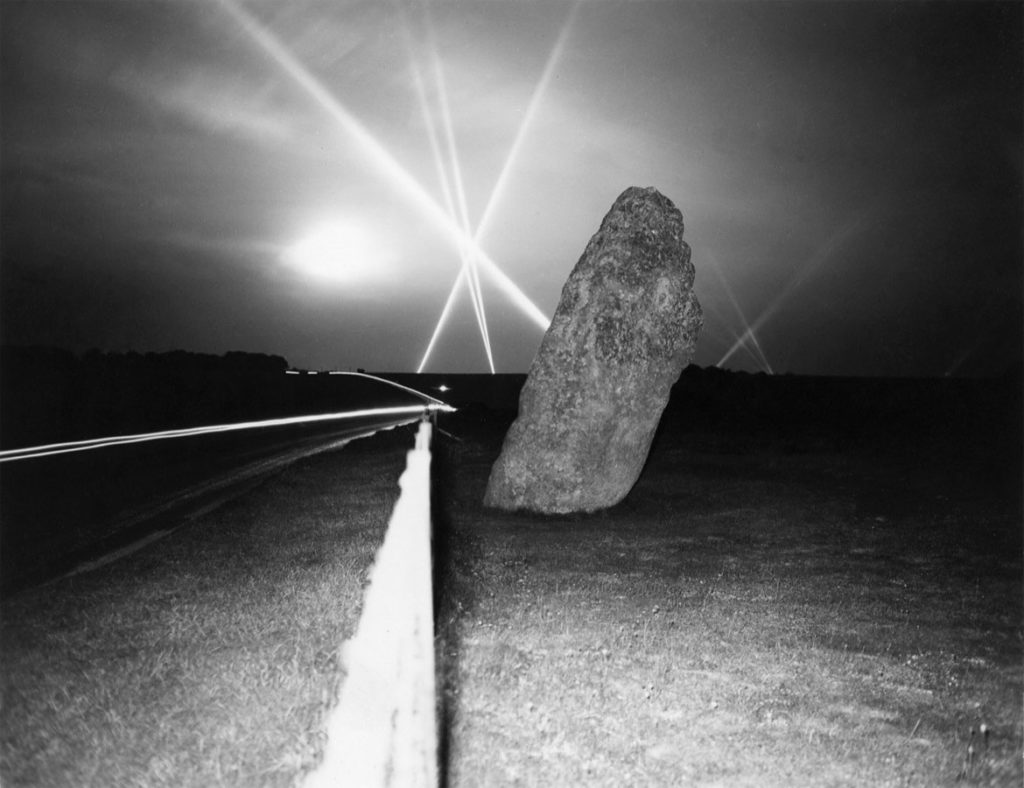
Edgerton’s stroboscopic flash allowed him to stop time to record a milk-drop splashing, a spinning lawn sprinkler, bullets bursting through an apple and ripping a playing card, flying hummingbirds and bats and luna moths, a golfer swinging a club, a pole vaulter, tumbling circus acrobats, high divers, a human cannonball, a rodeo rider bucked off a horse, a dolphin leaping out of a pool at the New England Aquarium.
“A .30 caliber bullet, traveling 2,800 feet per second, requires an exposure of less than 1/1,000,000 of a second,” Gus Kayafas wrote in the 1987 book “Stopping Time: The Photographs of Harold Edgerton.” In the 1950s, Edgerton photographed the first microseconds of an atomic explosion. “The fireball was documented in a 1/100,000,000-of-a-second exposure, taken from seven miles away with a lens 10 feet long.”
The results were often beautiful and seductively strange. “How well I remember my excitement on seeing the succession of exposures of a man swinging at a golf ball,” the pioneering Modernist photographer and curator Edward Steichen said. “It not only opened a new vista from a scientific standpoint, but also a new art form.” Edgerton’s work was included in the very first exhibition of photography at the Museum of Modern Art in 1937.
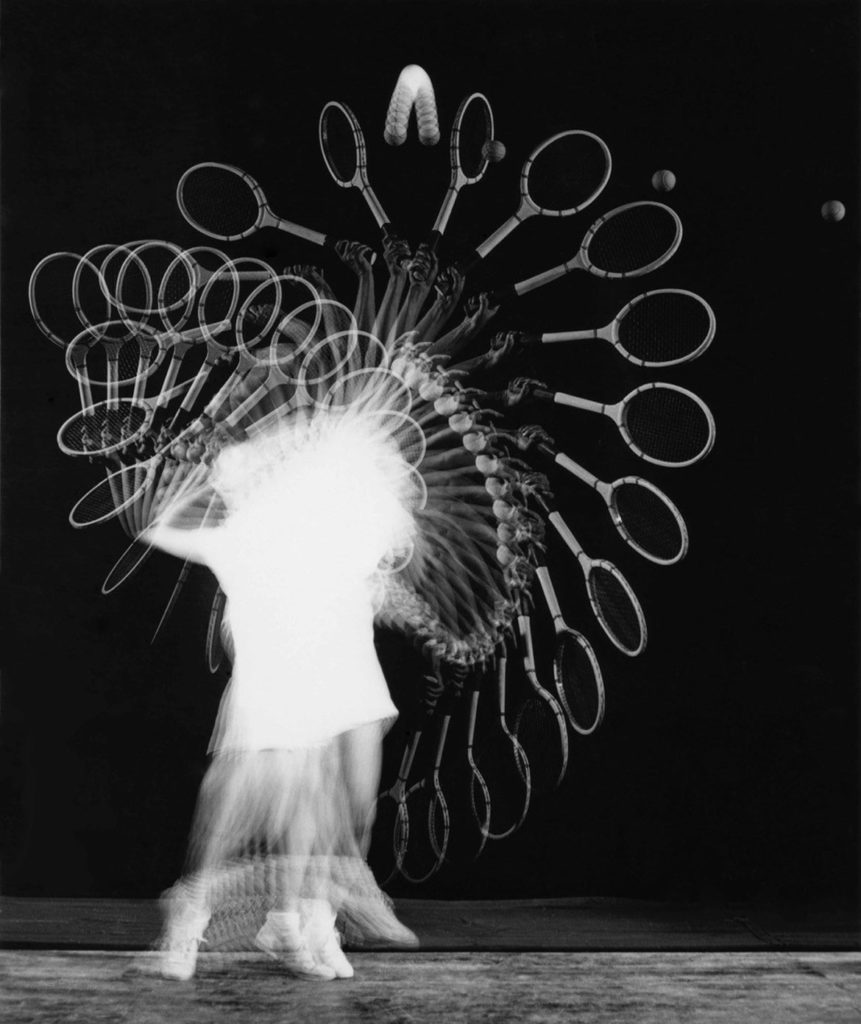
Edgertons’s innovations “revolutionized photography, science, military surveillance, Hollywood filmmaking, and the media,” according to the International Center of Photography in New York.
“In the last three decades of his life,” the MIT Museum has said, “Edgerton concentrated on sonar and underwater photography, illuminating the depths of the ocean for undersea explorers such as Jacques Cousteau, who dubbed his good friend ‘Papa Flash.’”
If this is the kind of coverage of arts, cultures and activisms you appreciate, please support Wonderland by contributing to Wonderland on Patreon. And sign up for our free, weekly newsletter so that you don’t miss any of our reporting.
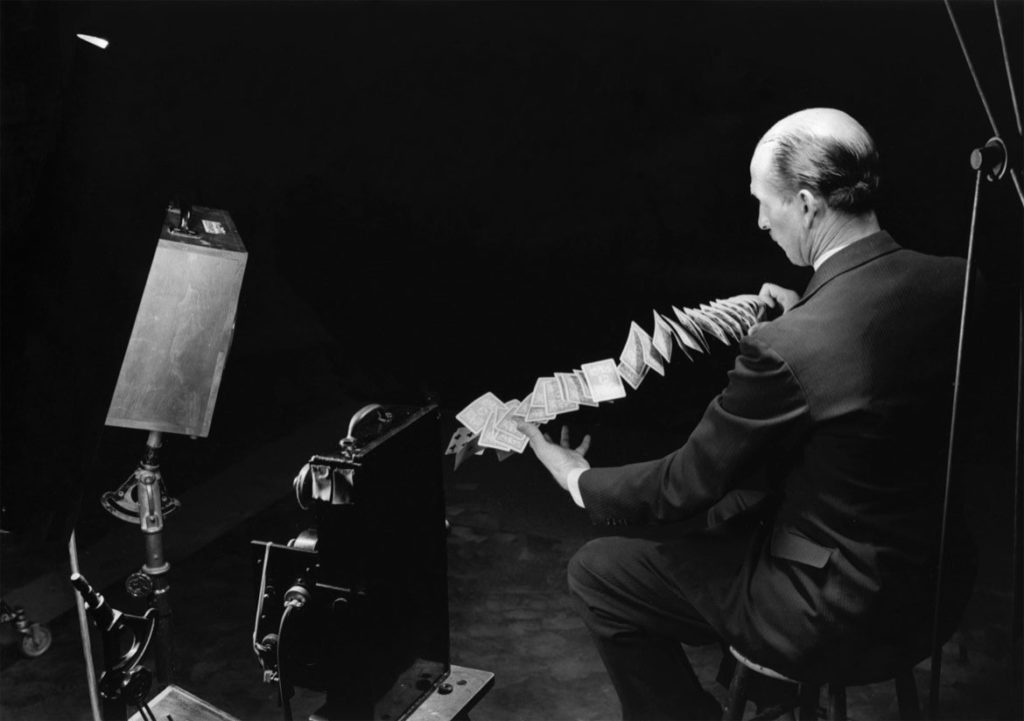
“Faster than the eye, but not the flash… an expert flips the cards from hand to hand, controlling their flight with thumb and forefinger, or not…. This print is one of two remaining from the 1976 edition of 11.”

“The dancer Gus Solomons, then in his final year at M.I.T., is captured by multiflash at 50 exposures per second. Solomons later established a famous dance troupe in Manhattan. This is a unique vintage print.”
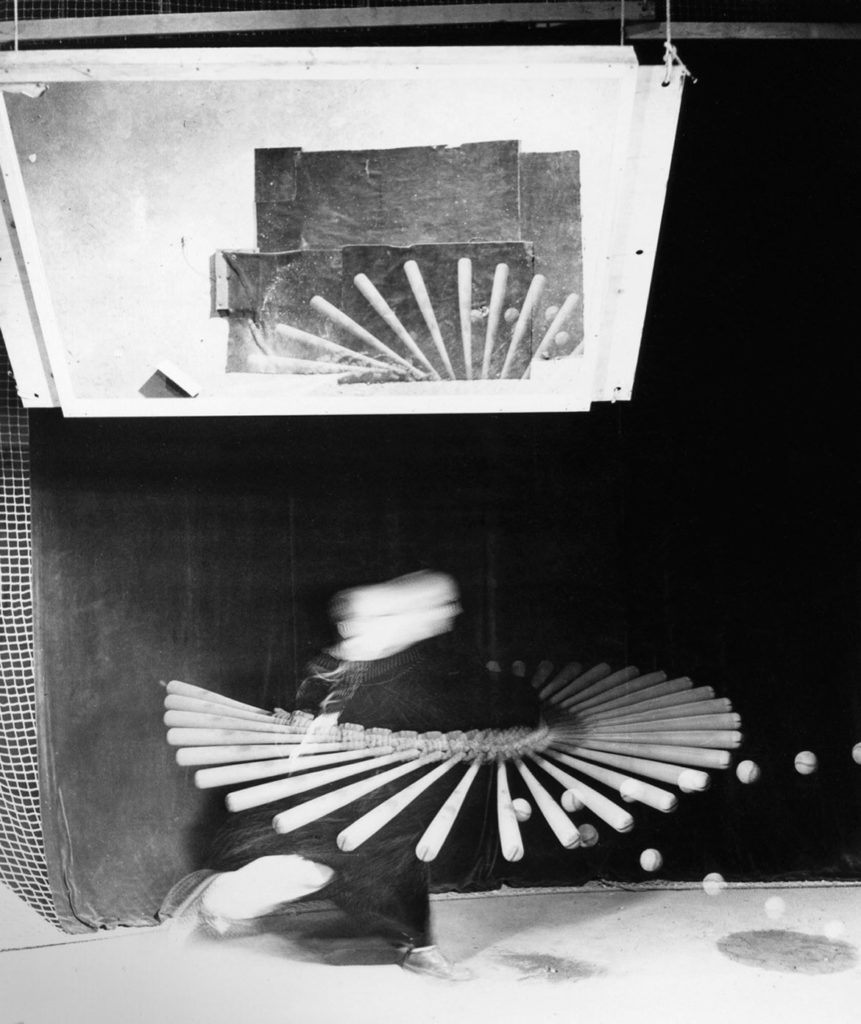
“Although Doc began photographing baseball hitters in 1935, it wasn’t until 30 years later that he was able to control the light and the environment so that he could make ultiflash pictures. The entire area was darkened, fenced in with strong netting, the batter draped in velvet to allow delineation of movement in front of him, and balls were pitched to him – not surprising, most of the photographs were misses or foul balls. Later, an overhead mirror was added which, with typical Edgerton ingenuity, allowed observation and measurement in all 3 dimensions (and time!) simultaneously. Twenty years later, Edgerton and his assistant, Gus Kayafas, were invited to the David Letterman Show to make photographs of Letterman as the atter. It took Kayafas several extended conversations with Letterman’s staff to convince them that it would be very difficult for Dave to hit a baseball in near-total darkness and, more importantly, to hit it where it wouldn’t strike the audience. This is a unique, vintage print.”
